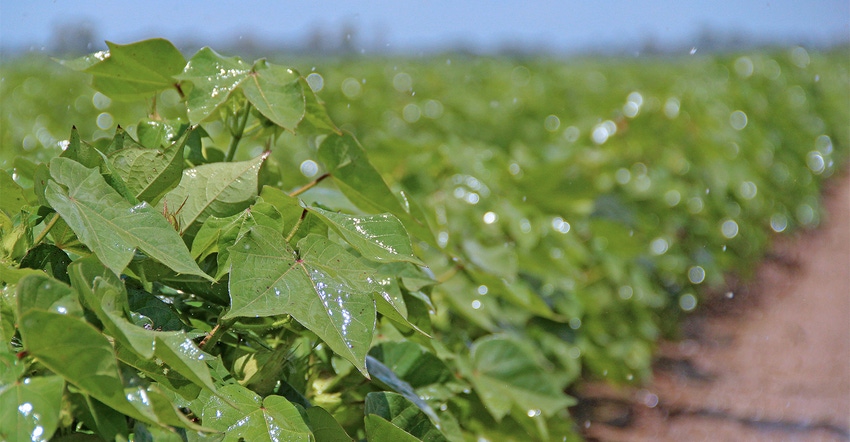
Profitability in cotton production is more than planting the right varieties. Management practices and favorable weather conditions can make a big difference to overall yields at the end of the season.
Bill Robertson, Cotton Extension Agronomist with the University of Arkansas System Division of Agriculture, discussed his recommendations for 2021 cotton production, during the Arkansas online Cotton Production Meeting.
Here are Robertson's top tips for profitable cotton production.
1. Consider cover crops
"If we're going to have a profitable cotton production, our number one limiting factor is soil health or soil structure," Robertson said. "If you're not already planting cover crops, consider getting cover crops on your radar for the future.
2. Remember the four Rs
"For our fertility programs to be successful, we need to get as close as we can to the four R strategies, which are using the right rate, at the right time, at the right place, with the right source. When we match those as best as we can to the needs of the cotton crop, we can be more efficient with our fertility program and cut back on our rates without sacrificing yield, which is a win-win for everybody.
3. Start early with plant growth regulators
"We have some varieties like DP 1646 B2XF, which is fairly aggressive, so we have to be aggressive on our plant growth regulators.
4. Target to have irrigation ready by June 20
"On irrigation, we need to be ready to irrigate earlier. If mother nature does not give us any rain in the middle of June, plan to be ready to irrigate by around June 20. As we have seen from years when it has rained in the middle of June, a little rain goes a long way toward giving us some of our record-breaking yields.
5. Three weeks of effective bloom
"When we make a crop, we need to try to do it in three weeks of effective bloom. Effective bloom is that period from the first flower to cutout. With three weeks of effective bloom, we can make the cotton crop we want to make. Cutout defines our last effective boll population or our last money boll. Those are the last bolls that are going to contribute significantly to yield and profit, and we need to time the termination of our insecticides based on our last money bolls and use them to help time harvest aids. That way, we can get the pickers in the field in the middle of September and get our cotton crop out in a timely fashion.
6. 2/3 of your acres in a variety proven to work for you
"When it comes to variety selection, our recommendation is to have 10% to 15% of your acres in new varieties, such as the new three-gene Bt varieties. The varieties that do good on your first-year program, you can graduate those to your second-year program and add more acres to those. Two-thirds of the farm needs to be in varieties proven to have worked well for you in the past few seasons.
7. Wait for proper planting conditions
"Our recommendation to start planting is to wait until there are 68-degree temperatures mid-morning, around 10 a.m., at our planting depth for three days in a row. Additionally, I like to have a favorable five-day forecast. Look at heat units five days after putting a planter in the field; I like to have, at least, 25 heat units after planting. However, I've heard Gus Lorenz say many times that our recommendations are not carved in stone, but they are a place to get us started. Sometimes, when we get into May, we must do what we have to do and that is getting seed in the ground. We do the best we can with what mother nature throws at us.
"Sometimes, you have to roll with the punches in agriculture. Last year is the perfect example of one of those times that did not fit perfectly with our recommendations. The weather pushed back planting dates, but a lot of the crops still turned out well. As I said before, these recommendations are good to plan by and to follow but are not carved in stone."
To find variety trial data from Arkansas, visit https://aaes.uark.edu/variety-testing/.
About the Author(s)
You May Also Like




